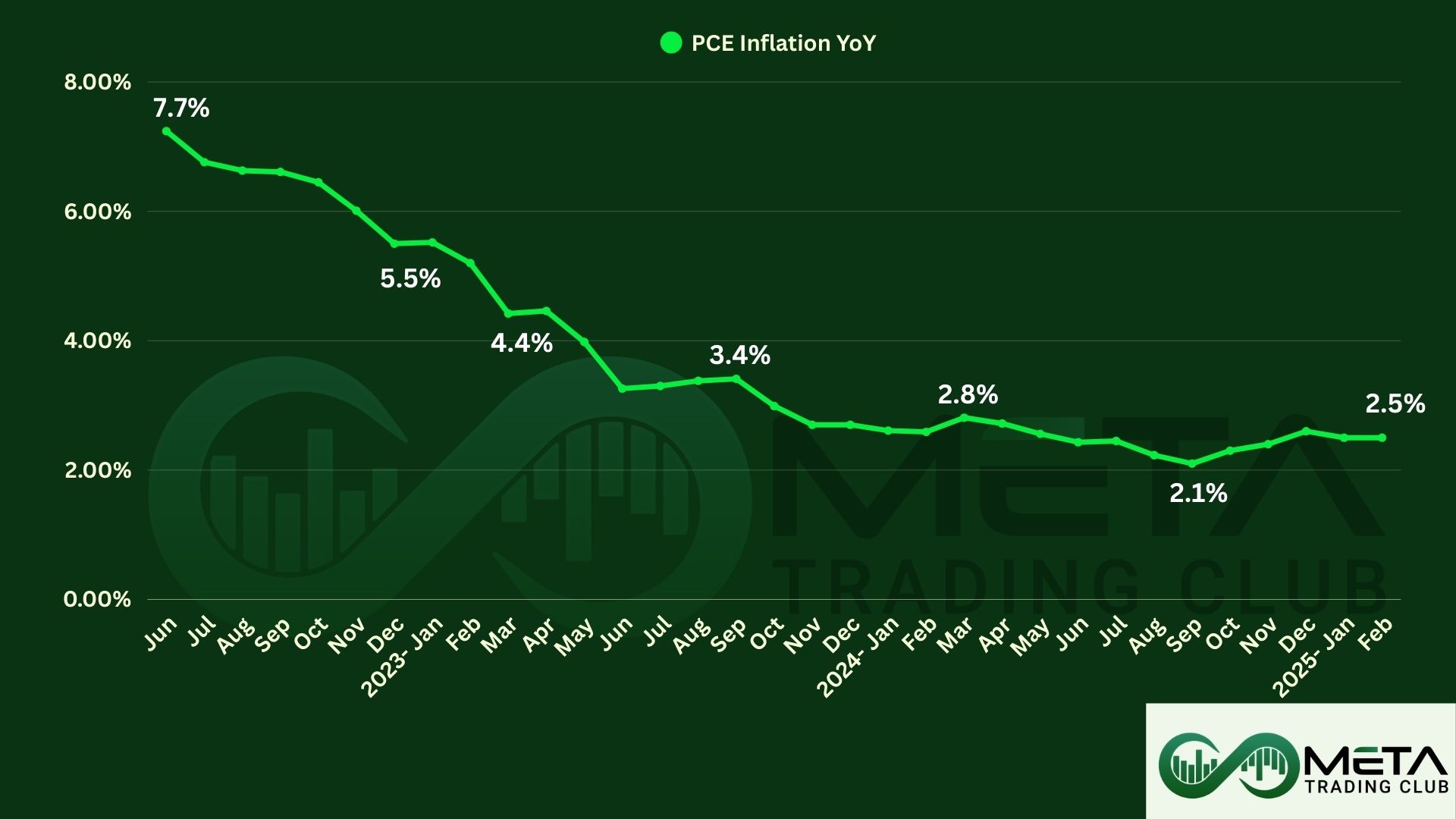The past week in financial markets saw varied performances across different asset classes, influenced by economic data releases, central bank communications, and geopolitical developments. This report provides an overview of significant movements and underlying factors impacting equities, bonds, commodities, and forex markets.
Economic Events:
Markets are expected to hold gains with key economic data and central bank communications potentially driving movements. Next week’s focus includes the Personal Consumption Expenditures (PCE) Price Index, which could influence inflation expectations and market sentiment. Additionally, euro traders will watch for preliminary CPI numbers for May, while Japanese and Australian inflation data will provide further insights into regional economic conditions.

Earnings:
This week focused on the much-anticipated earnings report from Nvidia, which delivered strong results, reinforcing the bullish AI infrastructure theme. Nvidia projected current quarter revenue to be $28 billion, surpassing analyst expectations. The broader market also reacted to relatively hawkish Federal Open Market Committee (FOMC) minutes and strong S&P manufacturing PMI data, reinforcing the “higher for longer” theme regarding Federal Reserve policy. The S&P 500 is up nearly 7% in five weeks, currently trading at a forward P/E of nearly 21, above the 10-year forward P/E of 17.7, indicating potential vulnerability to a valuation reset if unexpected negative catalysts arise.

Gold (XAUUSD):
Gold dropped to around $2,330 per ounce on Friday, nearing two-week lows, and was set for its first weekly drop in three weeks as investors reduced expectations of Fed rate cuts following the recent US economic release. S&P Global’s May flash readings of the manufacturing, services, and composite PMIs indicated that US business activity is accelerating. Additionally, fewer Americans filed for unemployment claims than expected, showing strength in the labor market. These developments followed the Fed’s May meeting minutes, revealing ongoing concerns about persistent inflation, with several officials indicating an inclination to raise interest rates should price growth persist. Consequently, gold prices are set to decline by 3.4% over the week.
Gold was affected by the US PMI data and dollar pricing, reversing its previous gains.
Stock Market:
The S&P 500 rebounded ahead of the long weekend, rising 0.7% on Friday, while the Nasdaq Composite closed at a new record, driven by a rally in AI stocks. In contrast, the blue-chip Dow remained subdued after a more than 600-point drop the previous day. Investors assessed fresh data showing new orders for key US-manufactured capital goods rebounded more than expected in April, and Michigan consumer sentiment revealed lower-than-anticipated consumer inflation expectations. Nvidia hit an all-time high of $1064, rising 2.4% following a 9.3% jump in the previous session, adding over $218 billion to its market value. Other mega-cap stocks such as Apple, Alphabet, and Meta gained between 0.9% and 2.6%. Over the week, the S&P 500 lost 0.3%, and the Dow declined 2.3%, snapping a five-week winning streak, while the Nasdaq added 0.7%.

Foreign Exchange Market (FOREX):
The Euro rose above $1.083, rebounding from a recent one-week low, as recent data brought the possibility of the ECB delivering fewer rate hikes this year. Negotiated pay surged 4.7% in Q1, prompting an inflation warning for the ECB. PMI readings showed private sector activity grew the most in a year in April amid faster increases in new orders and employment. Meanwhile, in the US, recent FOMC meeting minutes and comments from Fed officials indicate a hawkish stance, suggesting that interest rates will remain elevated for the foreseeable future due to concerns about disinflation progress.
The British pound was around $1.27, slightly lower from earlier in the week but still near a two-month high. Traders are digesting key economic data and its impact on monetary policy. Retail sales fell 2.3% last month, the most so far this year, and much worse than forecast. The annual inflation rate in the UK eased to 2.3%, approaching the Bank of England’s target of 2%, but above forecasts of 2.1%. Investors are now less likely to expect a rate cut in June, with a small majority anticipating the first cut in September. Prime Minister Rishi Sunak announced that the UK will hold national elections on July 4th, adding political risk and uncertainty.
The Australian dollar depreciated past $0.66 and was set to decline about 1.5% this week as stronger-than-expected US economic data raised concerns that the Federal Reserve could hold off on interest rate cuts. The latest FOMC minutes also showed policymakers’ concerns over stubborn inflation, with some members indicating willingness to tighten policy further if inflation surged. Domestically, the latest Reserve Bank of Australia meeting minutes showed that the board considered raising rates in May before ultimately deciding to maintain a steady policy. They noted that the flow of data had increased the risk of inflation remaining above target for an extended period. Meanwhile, data showed that consumer inflation expectations in Australia fell to 4.1% in May, the lowest since October 2021.
The New Zealand dollar held around $0.609 in the face of a firm US dollar as robust US economic data bolstered the prospect of interest rates staying higher for longer. The RBNZ maintained its cash rate at a 15-year high of 5.5% for the 7th consecutive time in its May meeting but raised its forecasts for peak interest rates and delayed expectations for rate cuts due to stubbornly high inflation. In a recent interview, Governor Adrian Orr downplayed the chances of another interest rate hike, stating the bank would only tighten policy further if necessary to contain inflation expectations. The country’s trade surplus narrowed in April as exports fell more than imports.
Bond Market:
The yield on the US 10-year Treasury note rose toward the 4.49% level, extending its rebound from the one-month low of 4.35% on May 15th, as fresh economic data pointed to a macroeconomic backdrop favoring restrictive monetary policy by the Fed. PMI data compiled by S&P showed that private sector activity expanded much more than expected in May, underscoring the economy’s recent resilience. The report also highlighted a fresh acceleration in inflationary pressures. These developments amplified bond sales after the Fed’s latest meeting minutes underscored concerns about limited progress in curbing inflation, prompting multiple members to express willingness to hike rates if needed. Only 55% of the market is now positioned for a rate cut in September, compared to 75% last week, with investors loosely split between one and two cuts this year.
US Crude Oil WTI :
WTI crude futures gained 1.1% to settle at $77.72 per barrel on Friday but booked a 3% weekly loss. This decline was primarily driven by U.S. economic data reinforcing expectations that interest rates might remain elevated for an extended period, impacting the US economy’s outlook and energy demand. The latest FOMC minutes indicated that some Fed officials are open to raising rates if inflation spikes. Additionally, EIA data showed an unexpected increase in U.S. crude inventories, with supplies at Cushing, Oklahoma, hitting their highest levels since July. However, a positive note regarding US gasoline demand, which reached its highest levels since November, provided some support to oil prices ahead of the US summer driving season. The upcoming OPEC+ meeting on June 2, rescheduled from June 1, is anticipated to address potential output cut extensions by major producers to manage global oversupply concerns and support prices.
The $77 price level acts as a support range for oil; if demand increases, it could push prices up to $79 per barrel.
Disclaimer: The views and opinions expressed in the blog posts on this website are those of the respective authors and do not necessarily reflect the official policy or position of Meta Trading Club Inc. The content provided in these blog posts is for informational purposes only and should not be considered as financial advice. Readers are encouraged to conduct their own research and consult with a qualified financial advisor before making any investment decisions. Meta Trading Club Inc shall not be held liable for any losses or damages arising from the use of information presented in the blog posts.













